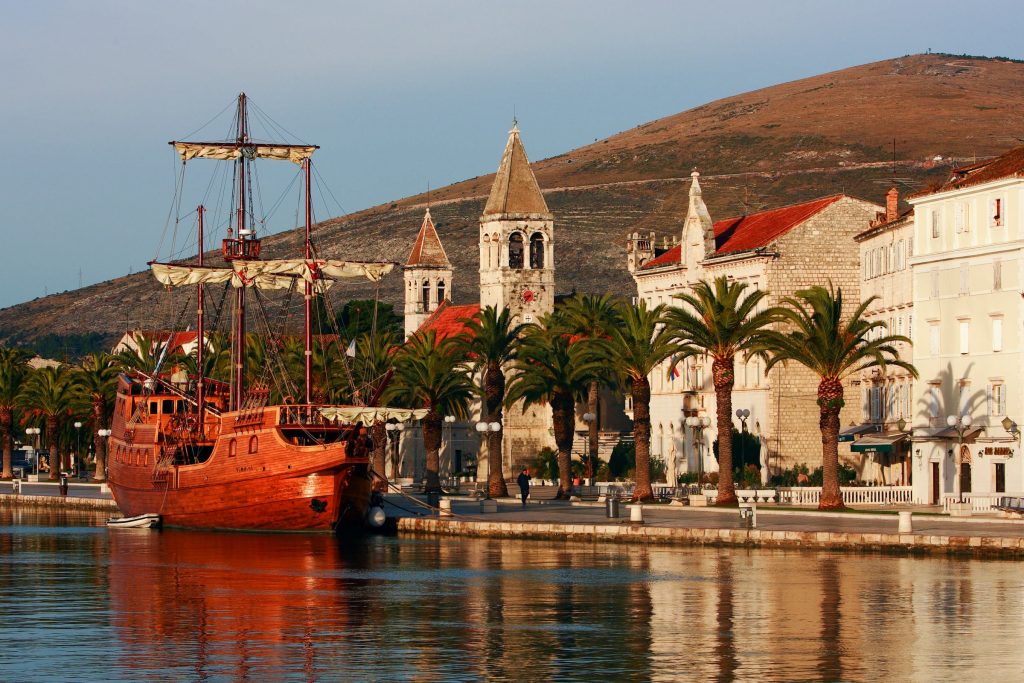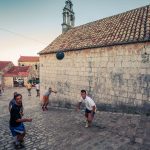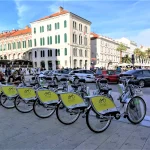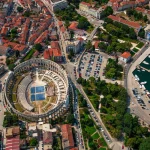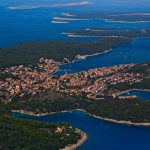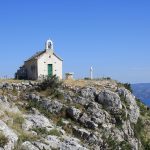If you haven’t read the first part, please head here to meet our protagonists, fearless adventurers and diligent reviewers, and see what they thought of Istria. We’re picking up where we left off, with all of our esteemed travellers heading further south.
First up, Zadar, the main Venetian base on the Croatian coast back in the day and thus an obligatory stop on every tour of the Adriatic. Very well defined in this succinct statement by archaeologist Jacob Spon who travelled in Dalmatia in 1675:
It’s the capital and one of the best places that the Republic owns in Dalmatia.
He also liked the cathedral and excellent paintings of Titian and Palma displayed in the churches of Zadar, but I’ll spare you the rest of the paragraph as it’s not more than a list of artworks.
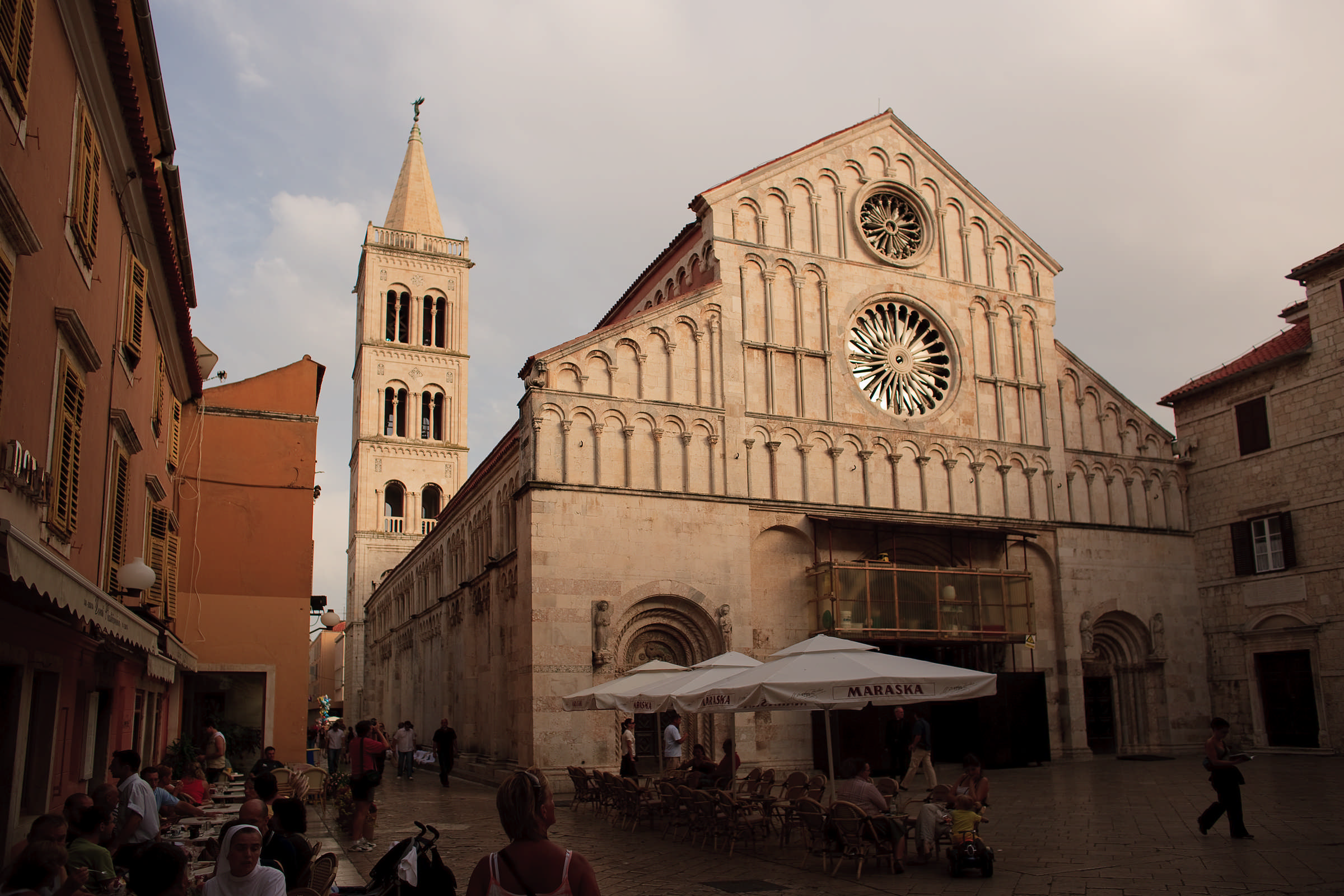 Zadar cathedral by Romulic
Zadar cathedral by Romulic
A few thoughts on Zadar by Noé Bianchi who visited in the 1770s, in his trademark enumeration style:
The city has six gates, a great Arsenal, and many ships and boats. It is a beautiful port, and a place to live in abundance; its territory spans over thirty miles on the mainland, with many castles, islands, and more than four hundred reefs. There are large pastures with plenty of livestock, and an abundance of all sorts of fish; they dress pompously, are very devoted to arms, but above all to humanist studies; they have many schoolmasters, and a lot of merchants.
Let’s hope it was the people of Zadar who dressed pompously and not the fish. Thankfully, we have a new character in our story: countess de La Morinière de La Rochecantin who offers her view of the locals, having visited Zadar in 1907:
The men are not handsome at all; their eyes are hard, their facial features sharp. The women, on the other hand, have a beautiful smile and something seductive under those colourful scarves with which they cover their heads.
Sorry, men of Zadar.
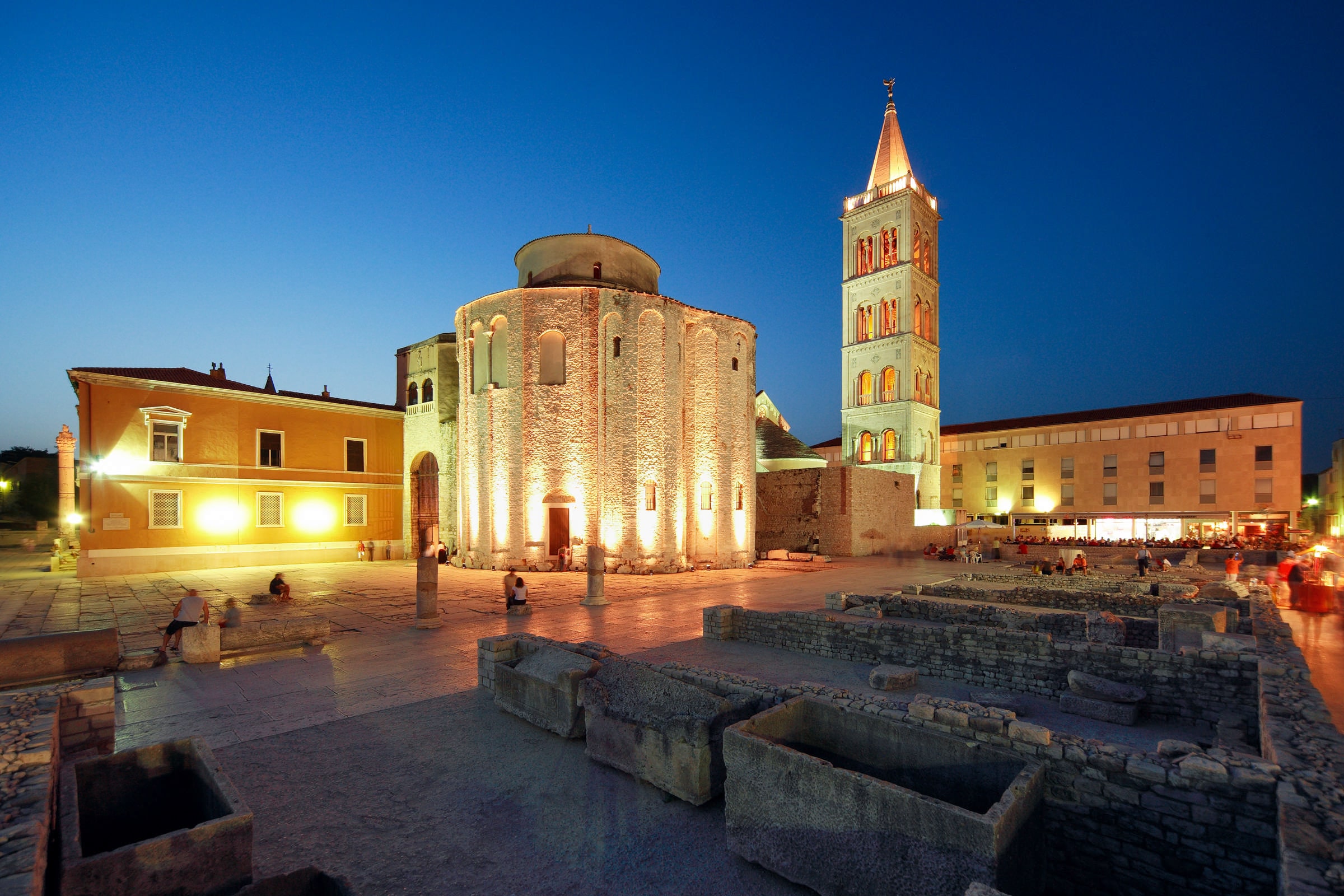 Zadar by Romulic
Zadar by Romulic
***
On we go to Trogir, where the countess notes the following:
The inhabitants are largely similar to those of the Illyrian islands, but this lot is more gentle. They live here in a small Provence. Tamarisk trees and pines, through which a soft wind whistles as if in song, line the narrow paths that run along the shore.
This morning, the water glistens with opal reflections, the air is gentle and warm, but it’s enough for the sky to get veiled in clouds for a feeling of melancholy to take hold of us. In these countries where the sun is king, it alone gives life to beings and things: aromatic plants, trees with pale foliage; the flora of such ardent regions only comes alive and reveals all its splendour and perfumes in the light and under the scorch of the sparkling star.
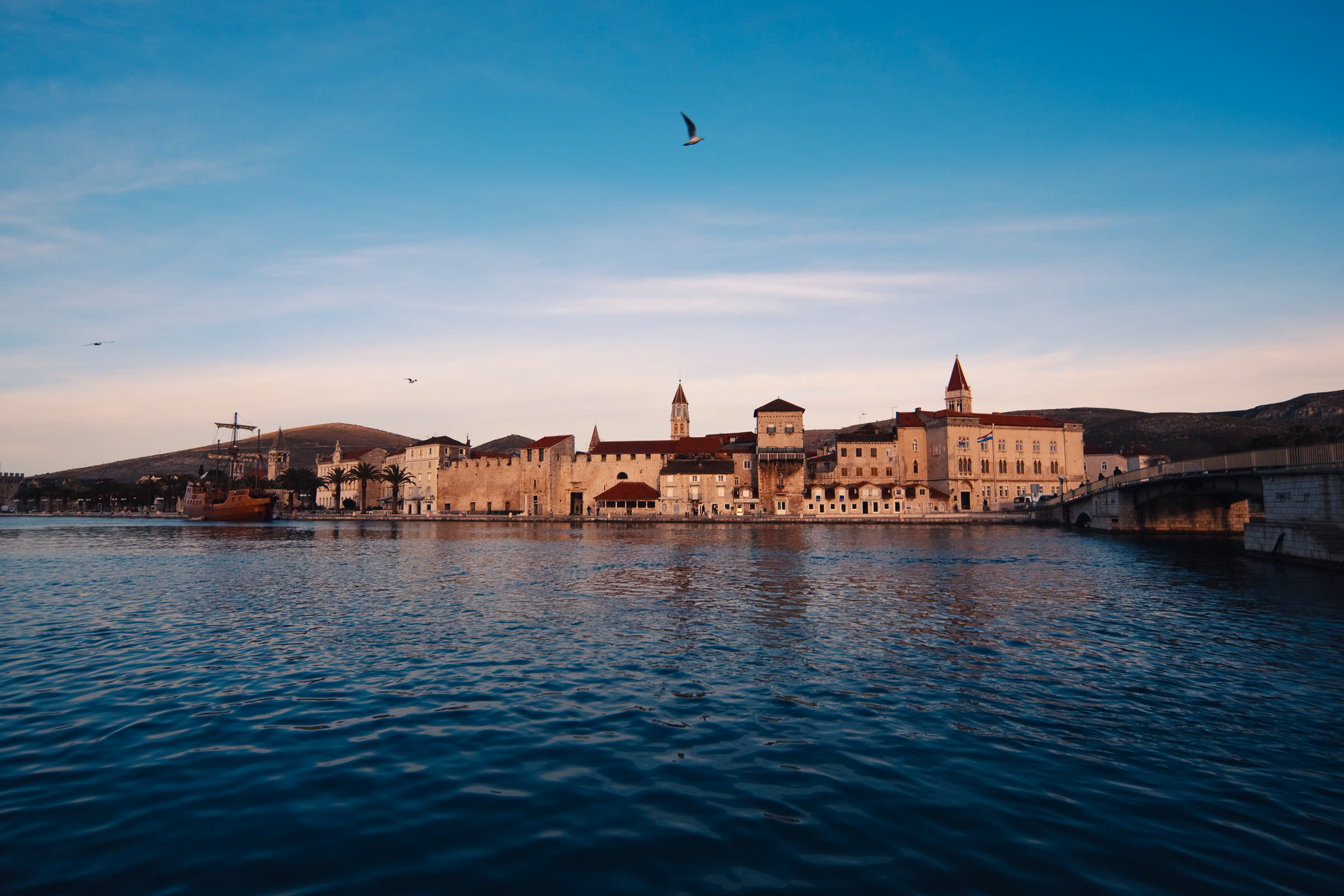 Trogir by Mario Romulic
Trogir by Mario Romulic
Spon on the other hand has a less poetic approach and seems to be excited about Trogir mostly due to it being the birthplace of Ivan Lučić Lucius, a Croatian historian of international renown.
Lucius is known as the father of Croatian historiography owing to his work ‘On the Kingdom of Dalmatia and Croatia’, in which he gives a comprehensive account of Dalmatia’s history from the Roman times to the end of the 15th century. Seemingly enough to merit admiration from monsieur Spon who, as we’ve learned, wasn’t easily impressed:
This monsieur Lucius is a nobleman from this country whom I had the honour to meet in Rome, where he is now residing. His homeland is indebted to him for having pulled it from the shadows of antiquity with the historic account he made.
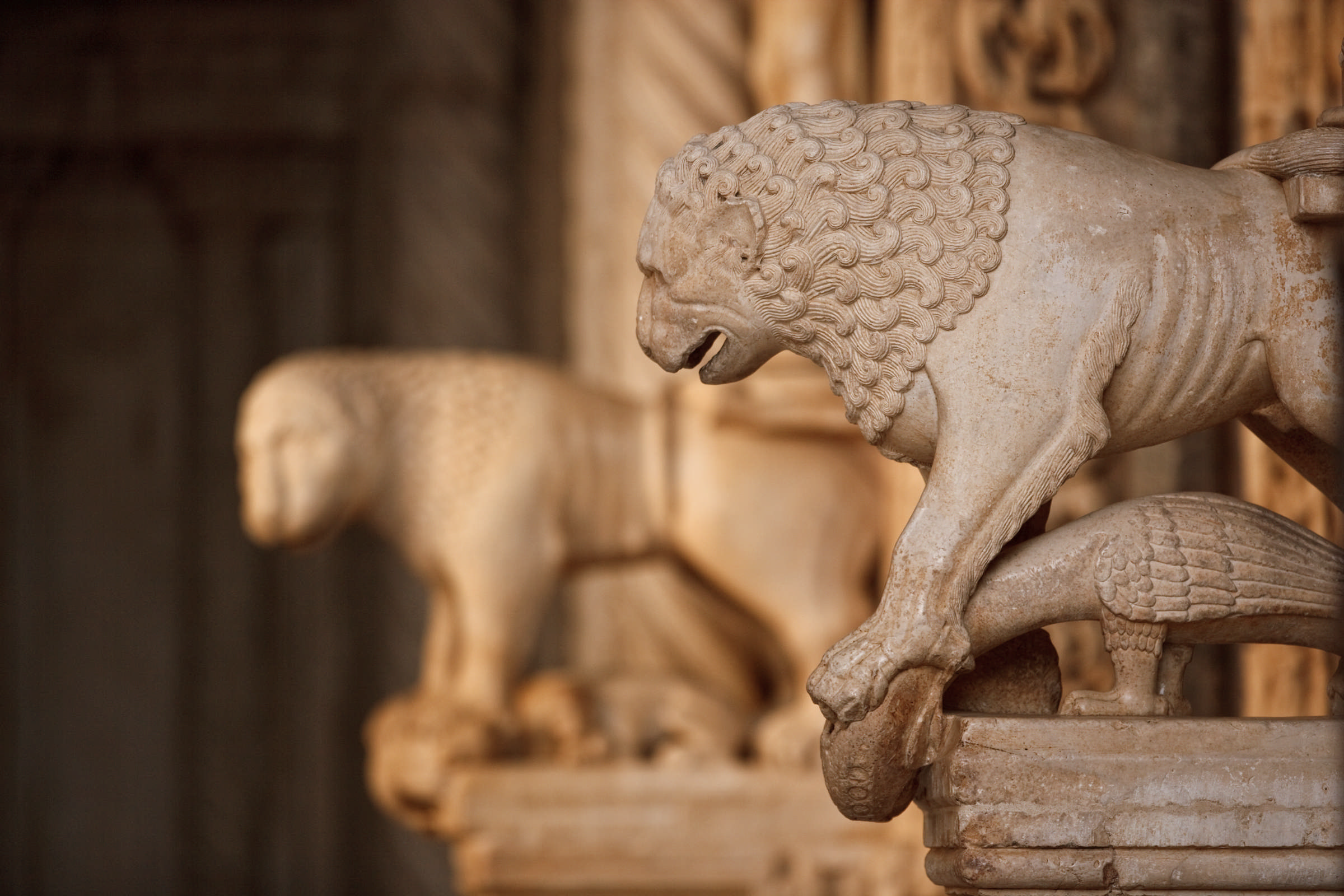 Trogir by Mario Romulic
Trogir by Mario Romulic
Immediately upon arrival, Spon and his party are struck by one of the worst troubles that can happen on a trip: no place to stay!
We had arrived in Trogir at dinner time and were looking for lodging, when we were told that we had to make our own arrangements for dinner, and that it wasn’t customary in that land to deal in hospitality [accommodation].
Naturally, as they were starving at that point, they weren’t exactly happy to hear this, but they got lucky shortly thereafter and found a place in town that sold wine. They were soon ushered into a nearby building that turned out to be none other than Lucius’s palace. This one:
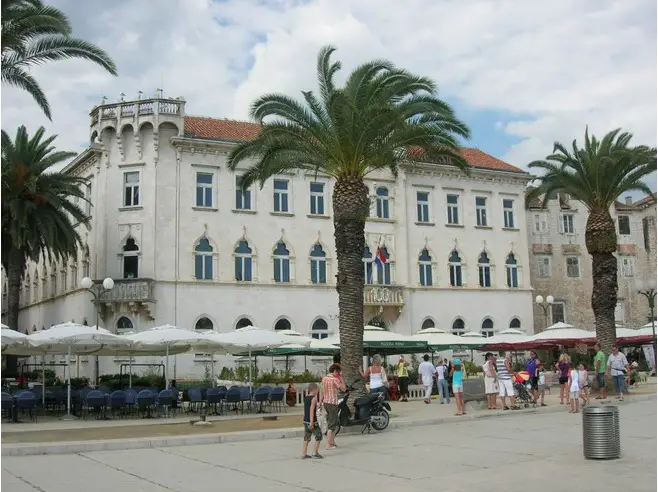
We were surprised to see this house, which is quite beautiful and has a view of the sea, empty and as if deserted, and we were even more surprised when we were told it was the house of this monsieur Lucius whom I just talked about. It has been more than twenty five years since he left it, all because of the incivility of a General of Dalmatia who, having arrived in Trogir, let [Lucius] know he wanted to lodge in his house. The nobleman was getting ready to receive him, and left for himself only a mediocre apartment. But the general immediately sent his people to take all the furniture outside. This impudence annoyed [Lucius] so much, he left the country immediately and never wanted to return.
Loving the gossip. Any thoughts on the sights, though?
The cathedral isn’t ugly. There are some statues in the church, made by a fairly good hand.
Today, the historic centre of Trogir, including the cathedral of St Lawrence, is a UNESCO World Heritage Site.
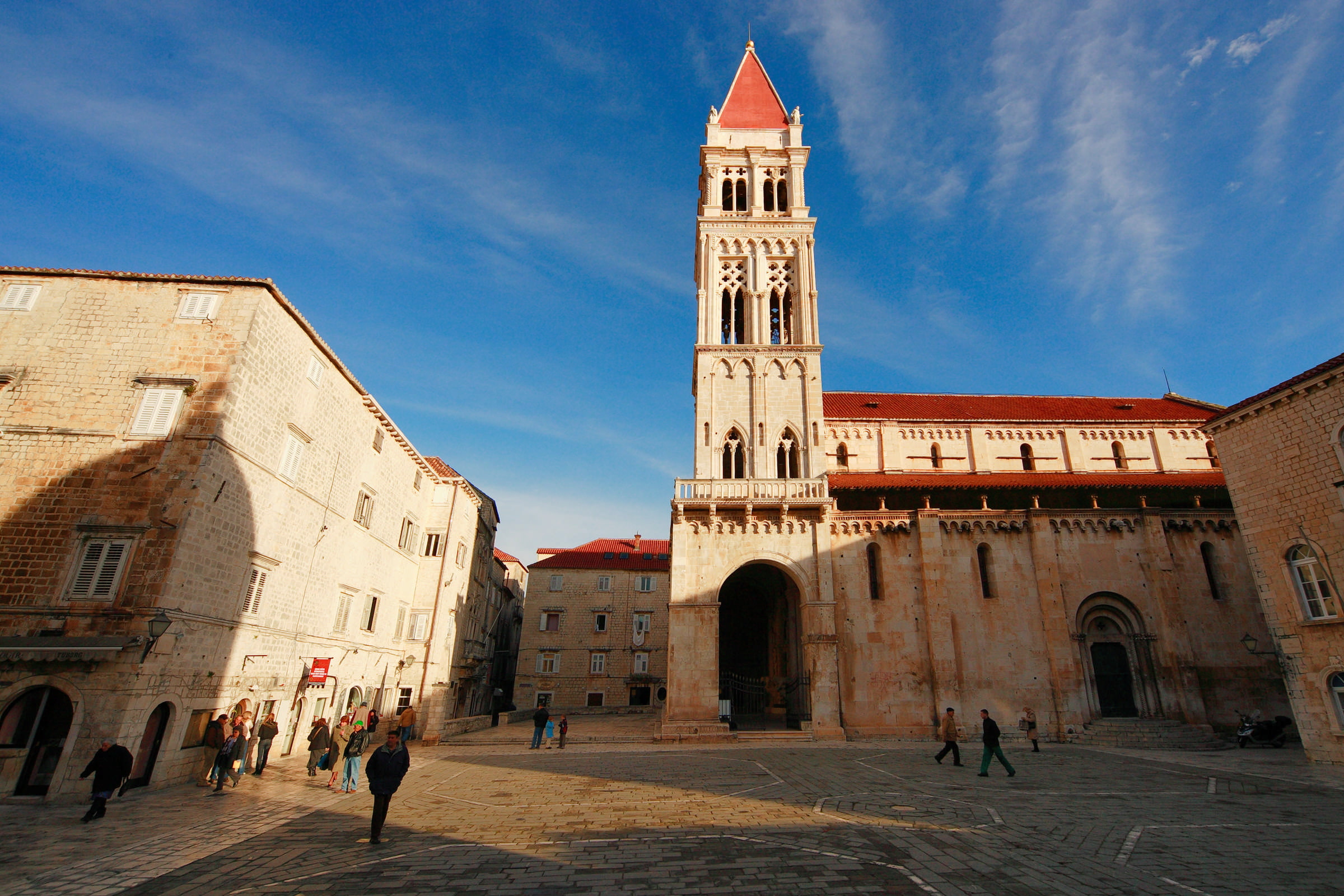 Trogir by Mario Romulic
Trogir by Mario Romulic
We have another appearance by Alberto Fortis who shares a warning: don’t get scammed on your travels! After two pages of musings on marble and its various properties, he says:
As I searched in vain around Trogir to find the famed marble, someone showed up who wanted to abuse my lack of guile by presenting me with a piece of Carrara marble as if it were taken from the nearby hill of St Elijah, where you can find old quarries whose marble isn’t rough at all, but is still far from the refined marble of Carrara.
No one’s taking Fortis for a fool!
A traveller must always keep their guard up, as I have, before they draw conclusions based on other people’s claims. I.e., they should go directly to the site in question or at least threaten to do so in spite of all difficulties; that is how you uncover lies.
A marble-related crisis isn’t a situation a lot of us are likely to find ourselves in these days, but fine advice nonetheless.
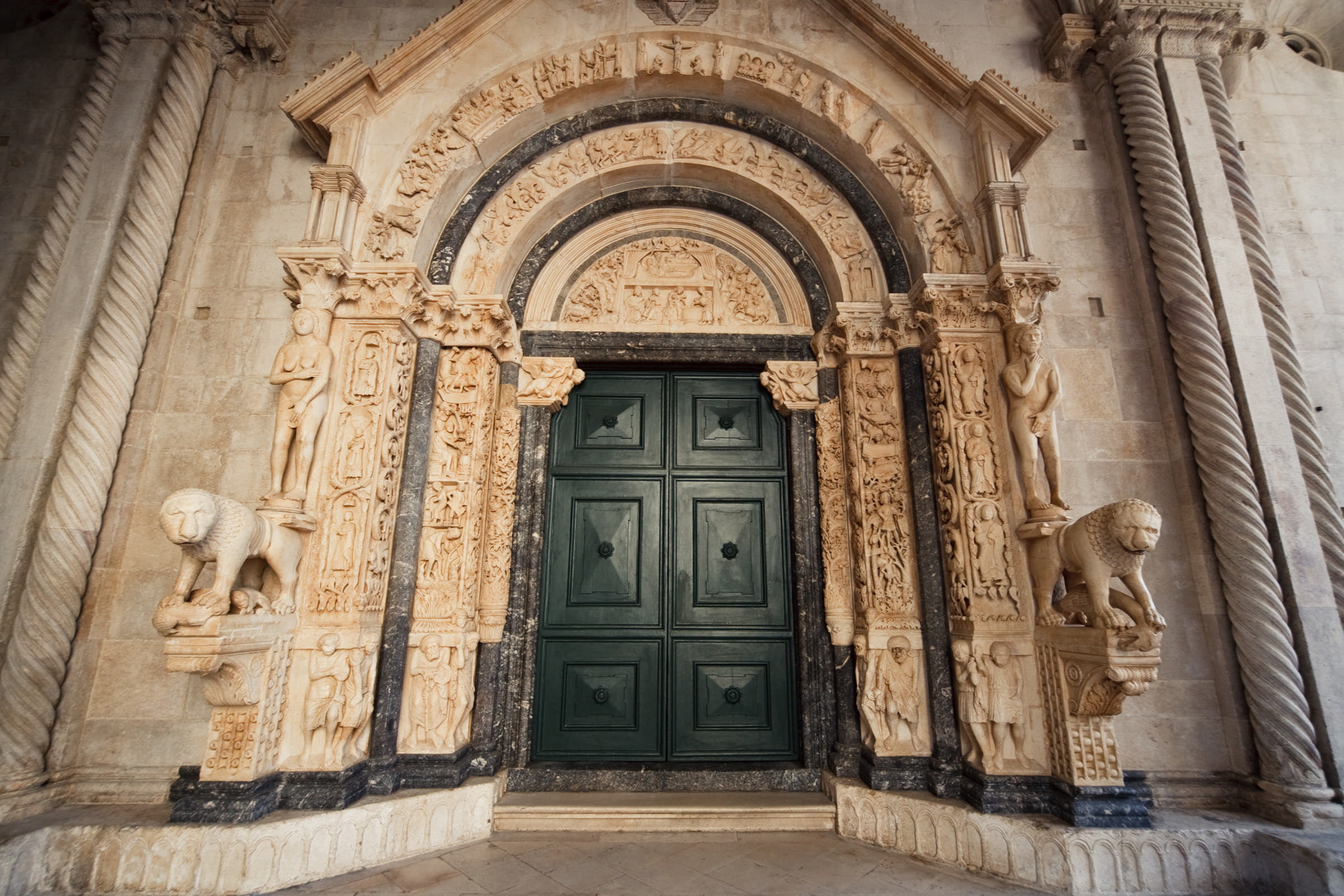 The portal of Trogir cathedral by Mario Romulic
The portal of Trogir cathedral by Mario Romulic
He adds a few favourable impressions of Čiovo island:
The island’s climate is truly very pleasant, the air perfect, oil, grapes and fruit excellent, the sea rich in fish, the port spacious and shielded. And its surface isn’t so small that a nobleman couldn’t comfortably walk or ride around it.
Good to know.
***
Before we go on to Split, a note on the hinterland by Marcotti, an Italian writer visiting in the late 1890s:
Those who want to be more in control of their time while travelling in the Dalmatian hinterland will prefer to travel by horse, but will have to get accustomed to a common lack of comfort in regards to accommodation and food: pecorino cheese, stale bread; plum brandy to drink. Corn polenta, ham, roasted lamb, smoked mutton and wine are items of luxury.
***
I believe we’re all familiar enough with the splendour of the Diocletian’s palace in Split to skip the lengthy elegies about its magnificence. Instead, let’s see a few impressions of the town in general, starting with Marcotti:
The market is especially crowded on Monday and Thursday mornings. It is interesting to see how peasants and people from the outskirts of town are dressed: bright colours (blue, red and black), large pieces of jewellery, filigree, gold and silver buttons, chains, medals. Compared with the Morlach women, the women of Kaštela stand out with their elegance.
The countess gets philosophical:
A rosy and curly child, with a serious expression of a grown man, leads us through narrow streets in the ruins of the palace. There is something moving about this loyalty that leads men to live where their ancestors lived, be it within the crumbling walls of an ancient palace or next to a dormant crater that will sooner or later sow devastation and death around it.
![]()
And Spon was surprisingly won over by Split, having spent ten days not doing much other than sampling the local cuisine:
The time we spent in Split did not last us long, because we discovered something new every day and besides, the food was very good. The only downside was accommodation which was not very convenient, as we found but four bare walls.
Partridge only costs five sols there, and hare doesn’t cost much more. There is meat at the butcher’s for one sol a pound, and turtles the size of two fists for four or five sols. But more often than not we preferred to abstain from meat and eat those little trouts from Salona, of which Emperor Diocletian was so fond, that for fear of running out of them he had an express conduit made which brought them to his palace.
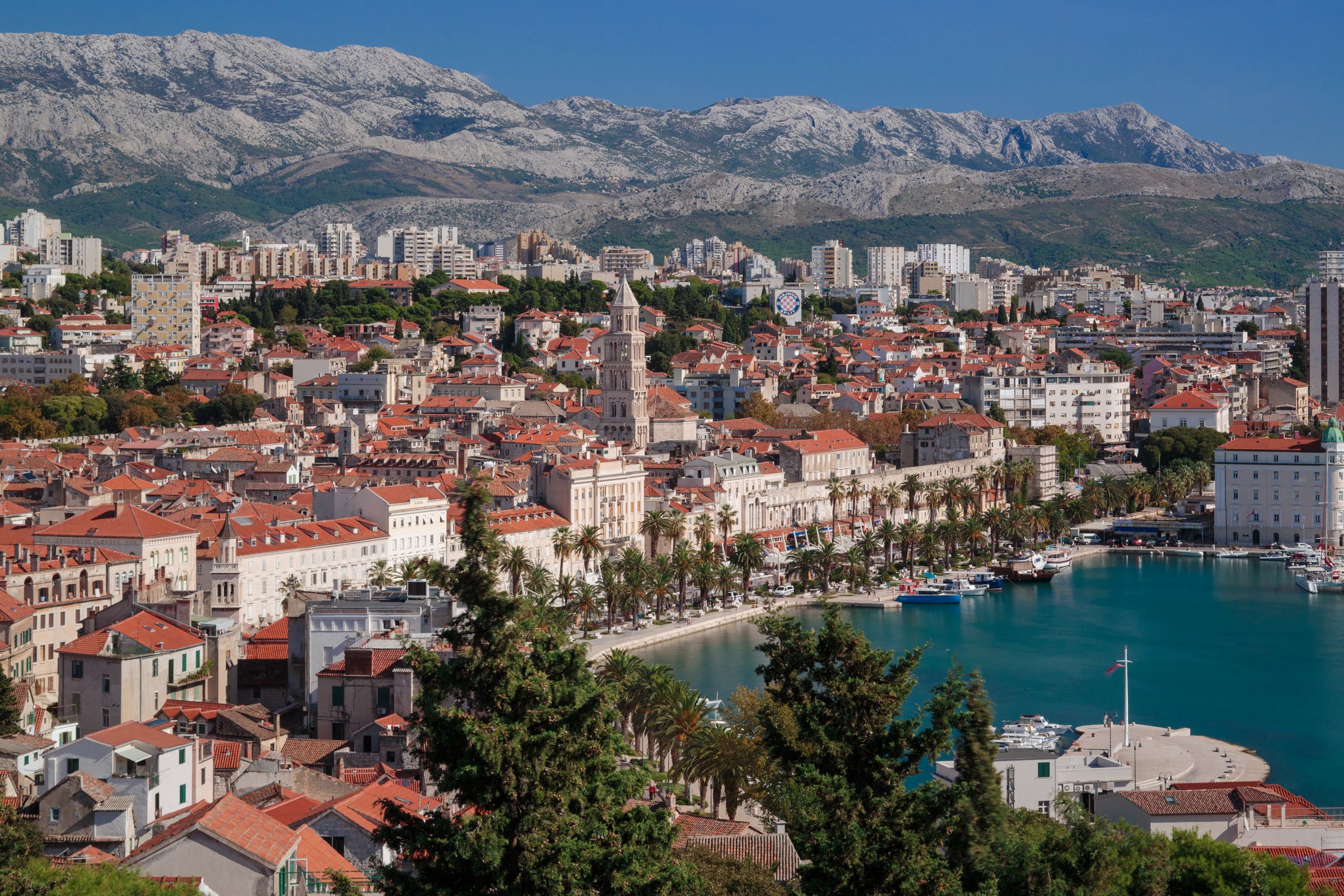 Split by Mario Romulic
Split by Mario Romulic
All of our brave travellers then went to see Klis. Marcotti offers some practical information:
From Split via Klis (2 hours) to Sinj (5 hours), superb road, but the postal service only operates twice a week. A permit from the commander’s office in Split is needed to visit the Klis fortress; it is not granted to ladies.
Rude.
It would take long to recall the whole of its glorious military history, he says about the fortress, then recalls it anyway. A history lesson later, he goes on to say:
The road, the gates, the barracks, they’re all modern; but the walls, the towers, the ramparts, all retain the picturesque charm of ancient military gear: the mosque was transformed into a warehouse. And there’s a beautiful view to boot. In the village, nestled on terraces below the fort, are several taverns.
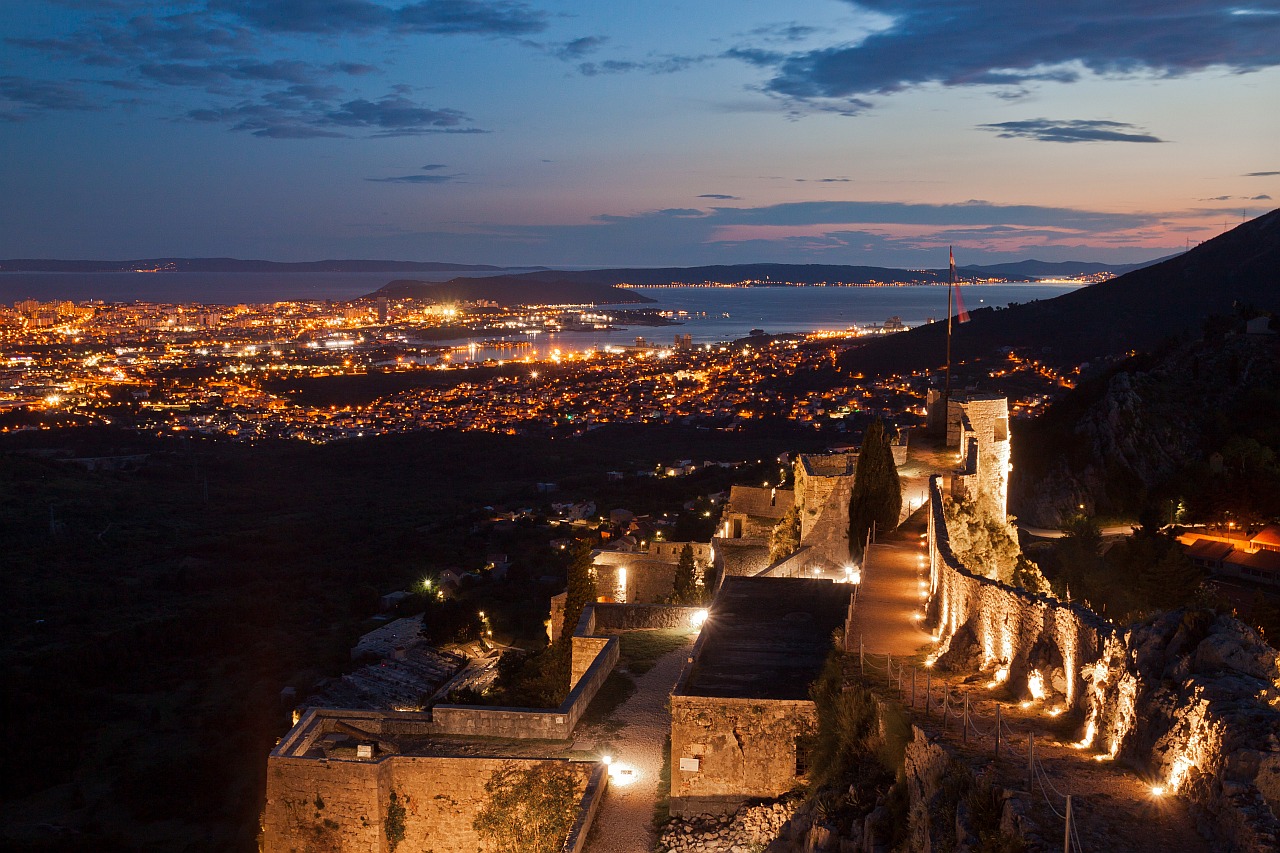 Kliss fortress
Kliss fortress
Countess Rochecantin:
The citadel of Klis, truly an eagle’s nest which proudly dominates the valley. The rock it’s built on is surrounded by peaks which would seem inaccessible, if it wasn’t for little pockets of greenery bearing witness to the patient conquest of man over this rugged nature.
And then there’s Spon, bless his heart:
There’s a lack of water and it gets terribly cold in winter. I imagine it’s a harsh penance for a Venetian nobleman to serve here as an officer for two years. 2/10
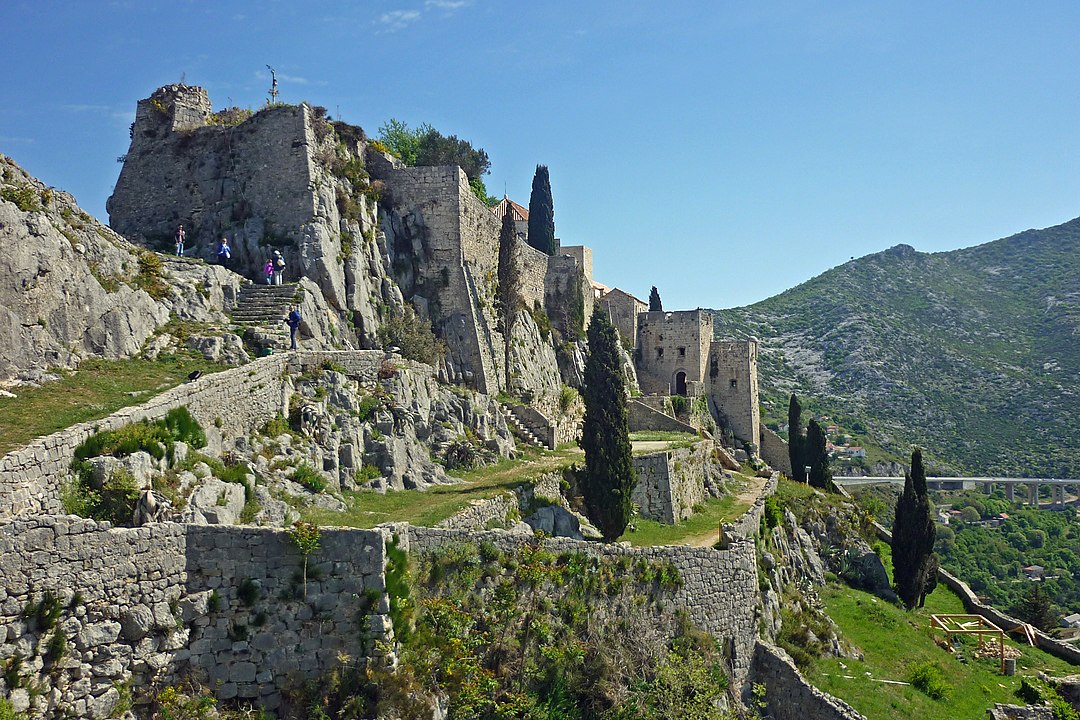 Kliss fortress
Kliss fortress
Marcotti offers a few pointers for towns and islands in the area:
At the mouth of the river Cetina, between Mount Biokovo and the sea is Omiš, a formidable ancient pirate nest. Ruins of the Mirabela and one other castle: excellent wines, pink muscat, even some dessert sparkling wines.
The man truly tells us what we want to know the most.
Šolta isn’t big: its chief town Grohote only has 1200 inhabitants. It’s been renowned for its honey since ancient times; the bees only suckle on rosemary.
Brač is the most important Dalmatian island, in terms of size, population and wealth. They produce vugava, an excellent prošek wine. (…) In the village Pučišće are quarries where stone was sourced for Diocletian’s grand construction in Split.
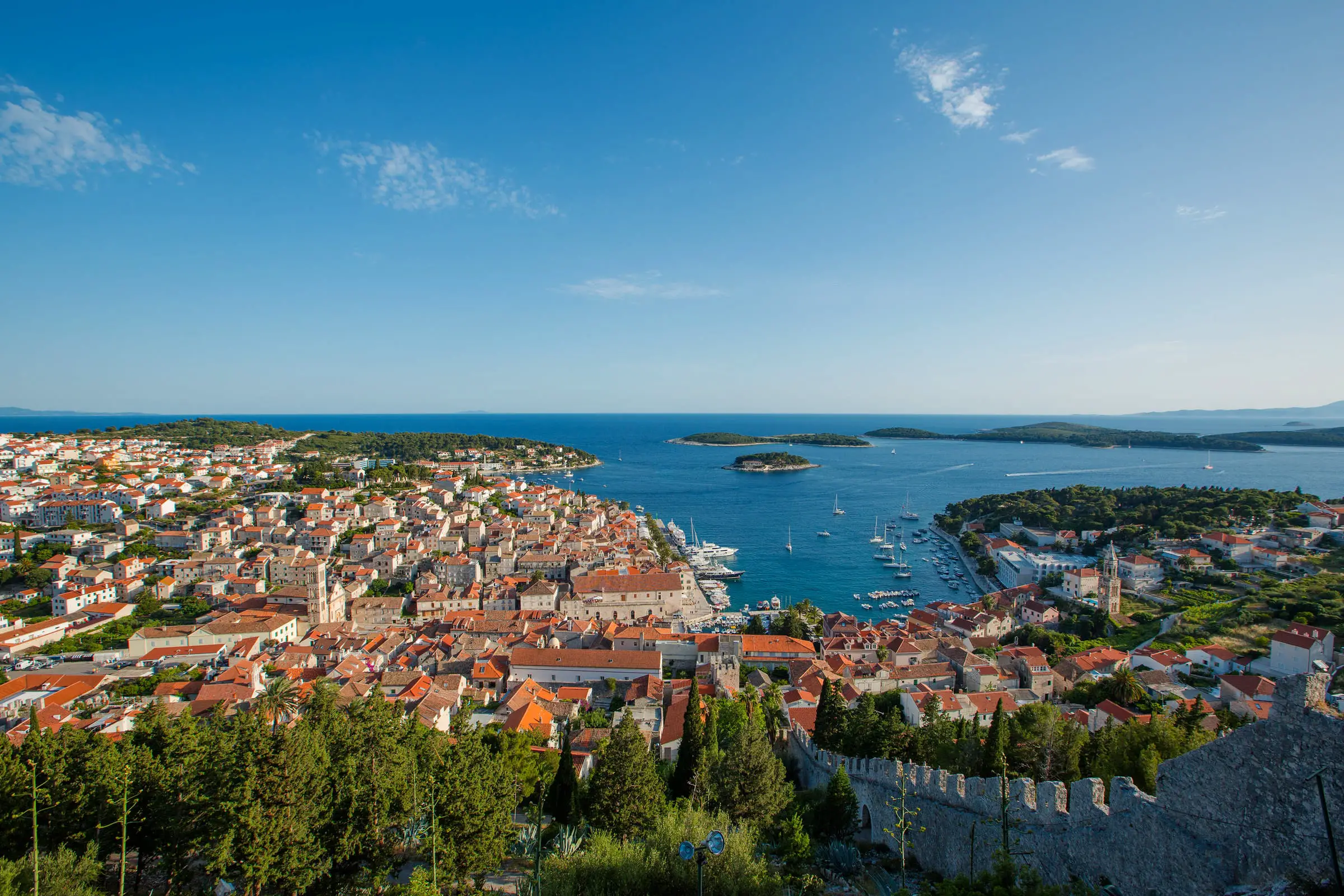 Hvar town by Mario Romulic
Hvar town by Mario Romulic
Hvar: shielded from bura wind by the island’s hills, and from sirocco wind by Pakleni islands, it enjoys a well-deserved reputation as a very favourable climate. Cypress, agave, carob and palm trees thrive there magnificently.
A particular thought stands out in this paragraph. At the time of his visit in the late 19th century, organised tourism was already in development in Croatia, notably in two destinations both mentioned here. Marcotti says:
If direct lines by sea between Italy and Dalmatia were properly established, Hvar town would be a highly recommendable winter destination for the Adriatic regions of the Kingdom, incomparably preferable to Opatija.
According to Spon, Hvar town was an inviting place even two hundred years earlier:
The people of the island, who are three or four thousand in number, have all withdrawn to the town of the same name so they can watch foreigners occasionally dock in their port. So they could receive them with more dignity, they have made there a beautiful pier of marble and stone blocks which lines the semi-circular port.
There is very good bread and very good wine, and plenty of sardines to whet the appetite, with which they also supply Italy and Greece.
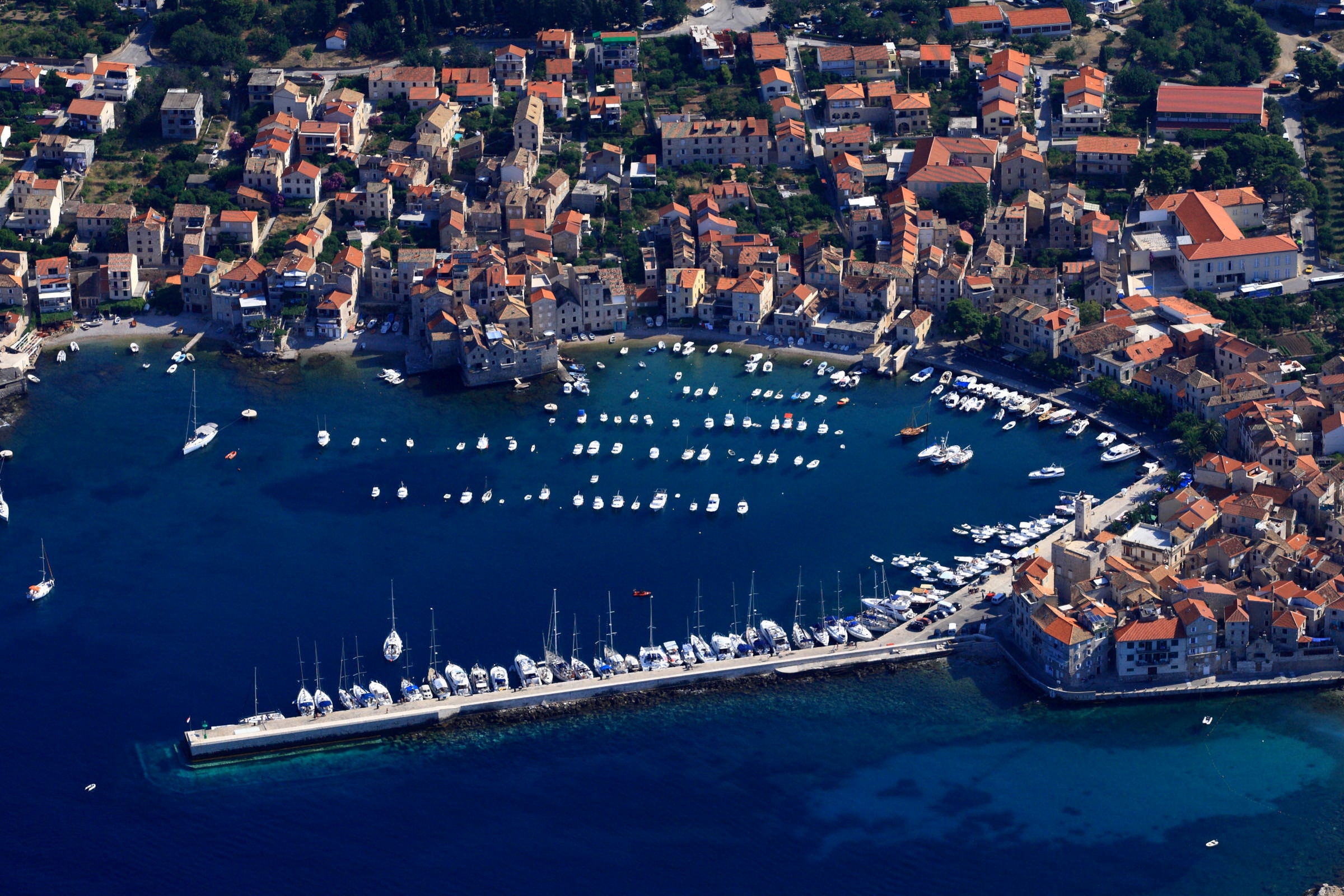 Komiža on Vis island by Mario Romulic
Komiža on Vis island by Mario Romulic
Vis: The island’s vegetation has a distinct southern character, with almond trees, figs, and palm trees. Some excellent wines are the opollo, the Margherita, the prosecco, the gripola, as well as vinegar and brandy. Sardines are abundant in Komiža; anchovies, mackerel, sea bream and snapper are found in all the waters around the island. The suckling lambs are delicious owing to the aromatic pastures of rosemary.
Spon also visited Vis island, but wasn’t impressed with the sights:
I won’t talk about the fortress, it’s just a crow’s nest that could be knocked down with ease from the nearby rocks. In the whole garrison there is but one simple soldier who performs the roles of Captain, Sargent and Porter, much like that of Plautus.
He goes to Korčula next, where he learns about jackals:
As this island is covered in woods, it is a haven for several wild beasts. Among them is a certain animal which I am told is built like a dog, but has the cry of a cat or a peacock. If one lights a fire at night near these woods, one can hear a great number of them shrieking and chanting their rabid song, such that those who have never heard them before mistake them for people yelling. It is also said that they dig up the dead to feed on them, and they are good for naught else, but to make some horrid furs out of them.
Next up: Dubrovnik, plus a few places we missed on our way south!
Sources for part II:
Jacob Spon, Voyage de l’Italie, de Dalmatie, de Grece, et du Levant, Fait és années 1675. & 1676., Tome I (Antoine Cellier le fils, Lyon, 1678)
Noé Bianchi, Viaggio da Venezia al S. sepolcro, et al monte Sinai (Remondini, Bassano, 1770)
Giuseppe Marcotti, L’Adriatico Orientale, da Venezia a Corfu (1899)
Alberto Fortis, Viaggio a Dalmazia, 1774 (Croatian edition: Put po Dalmaciji, Globus, Zagreb, 1984)
Comtesse de La Morinière de La Rochecantin, Croisière en Adriatique et en Méditerranée (1907)
Quotes translated from Croatian, Italian and French by the author of the article.

